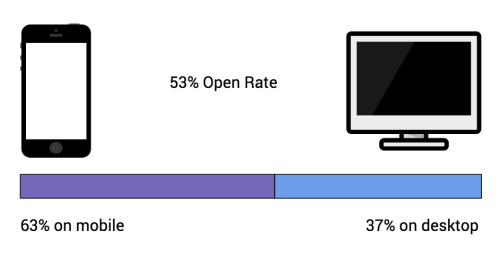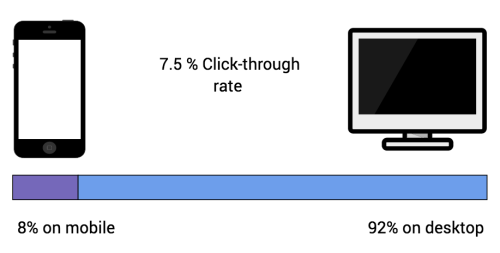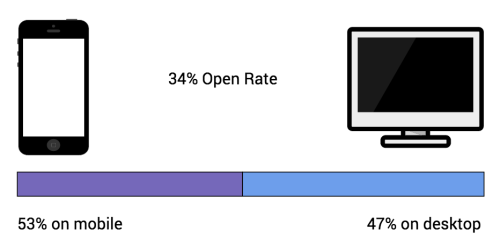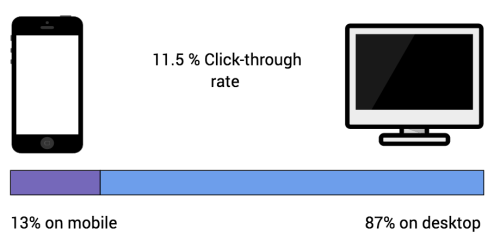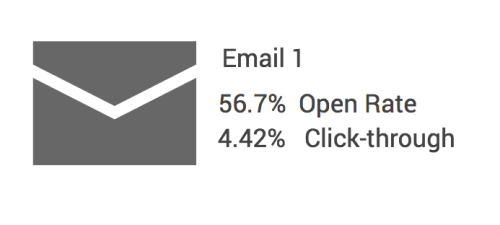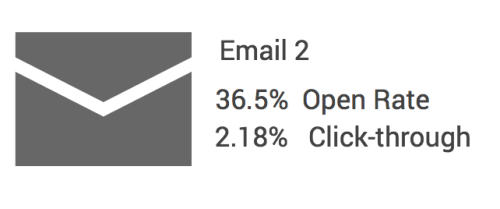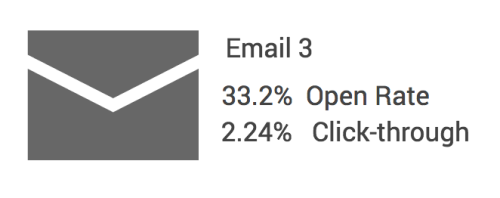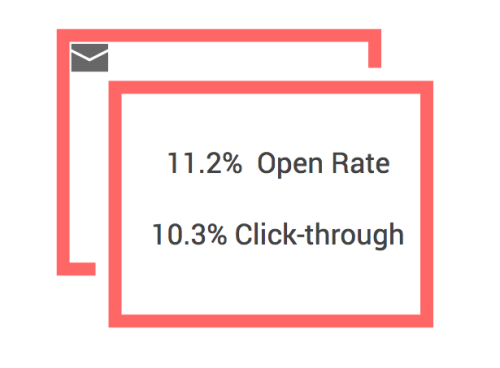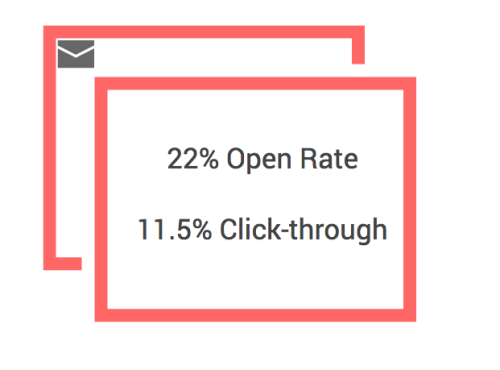Every morning I open my work inbox and greet around 3,467 unread-and-counting emails, wondering if it will ever get down to that coveted and clean (0). It’s a wishful thought. In reality, there are simply too many emails for me to keep up.
I’m not alone, though. Last year, the average number of emails sent and received in a single day was 205 billion. And that number is only rising.
To put such a big number in perspective, Neptune is just over 205 billion miles from Earth.
And now, with an average of 112 business emails being sent and received in a single day, it’s getting harder and harder to stand out from the noise. At LeadGenius, we’ve identified three opportunities to help streamline our own outbound processes for better success.
Opportunity Number One: Optimize for Mobile
Our first takeaway: how low our click-through rate was on mobile.
In a campaign focused on a top-of-the-funnel audience, we sent out an awareness email that received a decent 53% open rate. Not incredible, but not an epic fail. Of the 53% open rate, 63% opened on mobile, whereas 37% were opened on desktops.
I know, we thought it, too. The majority of our readers were on mobile, so that’s where our engagement would be also.
However, this was not the case. Instead, only 8% of the users on mobile clicked through, versus a stunning 92% on desktop.
This was the resounding trend with all our emails, regardless the campaign. High open rates on mobile but significantly lower click-throughs.
It boiled down to two factors. Either our mobile experience sucked, regardless of how much we designed it to be visually pleasing and clean, or there really is a different mindset when reading messages on your phone.
Regarding the visual experience of an email, there were detailed factors to consider that Sendwithus explained in a low-key, high-value email power-hour.
First, even if your template appears to be optimized for mobile, that doesn’t mean it’s made-for-mobile. Small details like where the CTA is seen in the scroll down can be a huge factor in having your audience continue their journey.
Secondly, really think through the experience you’re designing for your audience. Where is the CTA taking them? Is the next part of their journey optimized for mobile? Is the landing page copy consistent with the key value from the email? Experts in Creative Strategy can really help with these fine-tuned details.
Opportunity Number Two: Drip Campaign Based on Open Rates
If you’re spending a lot of resources and effort constructing your emails, you’re probably going to think it’s a total waste of time if less than half your targeted audience reads your message.
Rather than follow-ups or “re:” emails that are a common way of upping your open rates, our Demand Gen manager Chris Rodriguez came up with a creative hack.
His idea: send the same email over a certain time-span with different subject lines. Same content, same layout, same everything except the subject line. And send it based on who hasn’t opened it yet.
Here’s his hack in practice:
The breakdown:
The first email held the highest performance in both open and click-through rates. That being said, the click-through rate doubled once the next two emails were sent. To take it a step further, our own studies at leadGenius show that 32% of positive responses come from after the first email.
So the next question: Are these even good numbers? And if not, what are? It depends on a lot of factors, including industry standards, and click-through comparisons.
For clarity, the last two links show opens and CTR per industry as well as a comprehensive comparison of click-through rates. The consistent message in both sources: 2% is a solid CTR.
Which brings me to our last opportunity, one that got us well over 2% CTR per email.
Opportunity Number Three: Ignore the “Free” causes Spam Myth
I can’t say how many times I’ve read in blogs that using the word “free” in your subject line devalues your email or flags it as spam. According to MailUp, the word “Free” detracts from opens or click-throughs. Entrepreneur agrees, advising people to never put “Free” in your subject line.
Well, our numbers say quite the opposite.
I’ve used the four-letter “Free” a number of times, and I will keep using it. Why? It always out-performs every other campaign.
For example, in an email where we offered a free guide to the sales technology landscape, we put in the subject line: “Free Guide: Sales Technology Landscape”.
It performed well. Though there was a low open rate (11.2%), the CTR was very satisfactory at 10.3%.
There is only one rule I stick to when I’m using “Free” in the subject line: don’t lie. If you are actually offering something free, then it’s fair play. If you’re not offering something free, then just don’t put it in the subject line. Pretty simple, right?
Perhaps what the email blog and Entrepreneur failed to mention is the fact that if you do have something free, you might as well promote it honestly.
To Sum Up
Optimize for mobile. Always. It’s only increasing in engagement and is worth the time to get right.
Be creative when it comes to harvesting. Whether you research high-performing hacks, or come up with your own, it’s worth putting time and energy into getting the most out of every email campaign.
Question all go-to myths with your own practices and data. It gives you a better understanding of the space, and you might even have a chance to prove others wrong.
Whether you’re looking to get better engagement or a cleaner journey for your prospects, these three opportunities can help improve your outbound strategies across-the-board.

